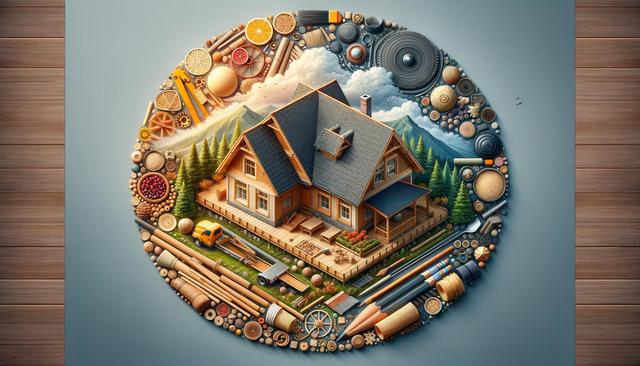The Role of Roofing in Structural Integrity
A roof does far more than cover a building—it plays a pivotal role in maintaining the structure’s integrity and safety. It shields the interior from weather conditions, provides insulation, and contributes to the overall energy efficiency of a home or commercial property. Without a reliable roof, even the most well-built buildings become vulnerable to water damage, mold growth, and structural deterioration. Properly installed and maintained roofing can last for decades, making it one of the most important long-term investments for any property owner.
Roofs are designed to handle various environmental pressures depending on geographic location. For example, sloped roofs are common in regions with heavy rainfall or snow, allowing for efficient runoff. Flat roofs, on the other hand, are typically seen in urban environments and on commercial buildings. Each type of roof requires unique materials and installation methods, which makes professional planning and design essential.
Choosing the Right Roofing Material
Selecting the appropriate roofing material can significantly impact the durability, appearance, and cost of your project. There are numerous options available, each with specific advantages. Common roofing materials include:
- Asphalt shingles: Affordable and easy to install, ideal for many residential homes.
- Metal roofing: Durable, fire-resistant, and recyclable, often used for both homes and commercial spaces.
- Clay or concrete tiles: Known for their longevity and resistance to harsh weather.
- Wood shakes: Offer a natural look, but require more maintenance and are less fire-resistant.
- Synthetic roofing: Made from rubber, plastic, or polymer, these mimic traditional materials but often offer increased durability.
The choice should depend on factors such as climate, architectural style, budget, and long-term maintenance goals. Consulting with a roofing specialist can help ensure the best fit for your specific needs and conditions.
Roof Maintenance: Extending the Life of Your Investment
Regular maintenance is key to extending the lifespan of any roof. Ignoring small issues can lead to costly repairs or even complete replacement. A routine inspection, ideally twice a year and after major storms, can help spot problems early. Common maintenance tasks include:
- Clearing debris from gutters and downspouts
- Checking for damaged or missing shingles
- Inspecting flashing around chimneys and vents
- Looking for signs of water damage in the attic or ceiling
Maintaining proper ventilation and insulation in the attic can also prevent moisture buildup, which is a common cause of roofing problems. Taking a proactive approach to roof care not only protects your home but also helps maintain its value.
Energy Efficiency and Sustainable Roofing Options
As energy costs rise and environmental concerns grow, more property owners are turning to energy-efficient and sustainable roofing solutions. These modern options not only reduce environmental impact but can also lower utility bills. Popular eco-conscious roofing choices include:
- Cool roofs: Designed to reflect more sunlight and absorb less heat, reducing cooling needs in warm climates.
- Green roofs: Covered with vegetation, they provide natural insulation and help manage stormwater.
- Solar roofing: Integrated solar panels generate electricity, combining sustainability with functionality.
- Recycled materials: Roofing made from reclaimed rubber, plastic, or metal reduces waste and conserves resources.
While the initial investment for sustainable roofing may be higher, the long-term savings and environmental benefits often make it a worthwhile choice. Incentives and rebates may also be available to offset some of the upfront costs.
When to Repair or Replace Your Roof
Knowing when to repair or replace a roof can prevent further damage and financial strain. Minor issues like a few missing shingles or small leaks can often be repaired without replacing the entire roof. However, extensive damage, sagging, or frequent repairs may indicate that a replacement is necessary. Signs that you may need a new roof include:
- Age: Most roofs have a lifespan of 20 to 30 years, depending on the material.
- Visible damage: Cracked, curled, or missing shingles are a red flag.
- Water stains or mold: These can signal ongoing leaks and water infiltration.
- Granules in gutters: Losing granules is a sign that asphalt shingles are deteriorating.
Professional roofers can conduct a thorough inspection and provide guidance on the most cost-effective and safe solution. Whether repairing or replacing, timely action is crucial to maintaining the integrity and performance of your roof.
Conclusion: Investing in the Longevity of Your Roof
Roofing is more than just a construction element—it’s a critical part of protecting and preserving your property. Whether you’re selecting materials, scheduling regular maintenance, or considering a full replacement, making informed decisions can add significant value and peace of mind. Property owners who prioritize roof care are likely to benefit from increased energy efficiency, improved safety, and enhanced curb appeal. By understanding the key components of roofing and staying proactive, you can ensure your home or building remains safe, comfortable, and durable for years to come.




Leave a Reply